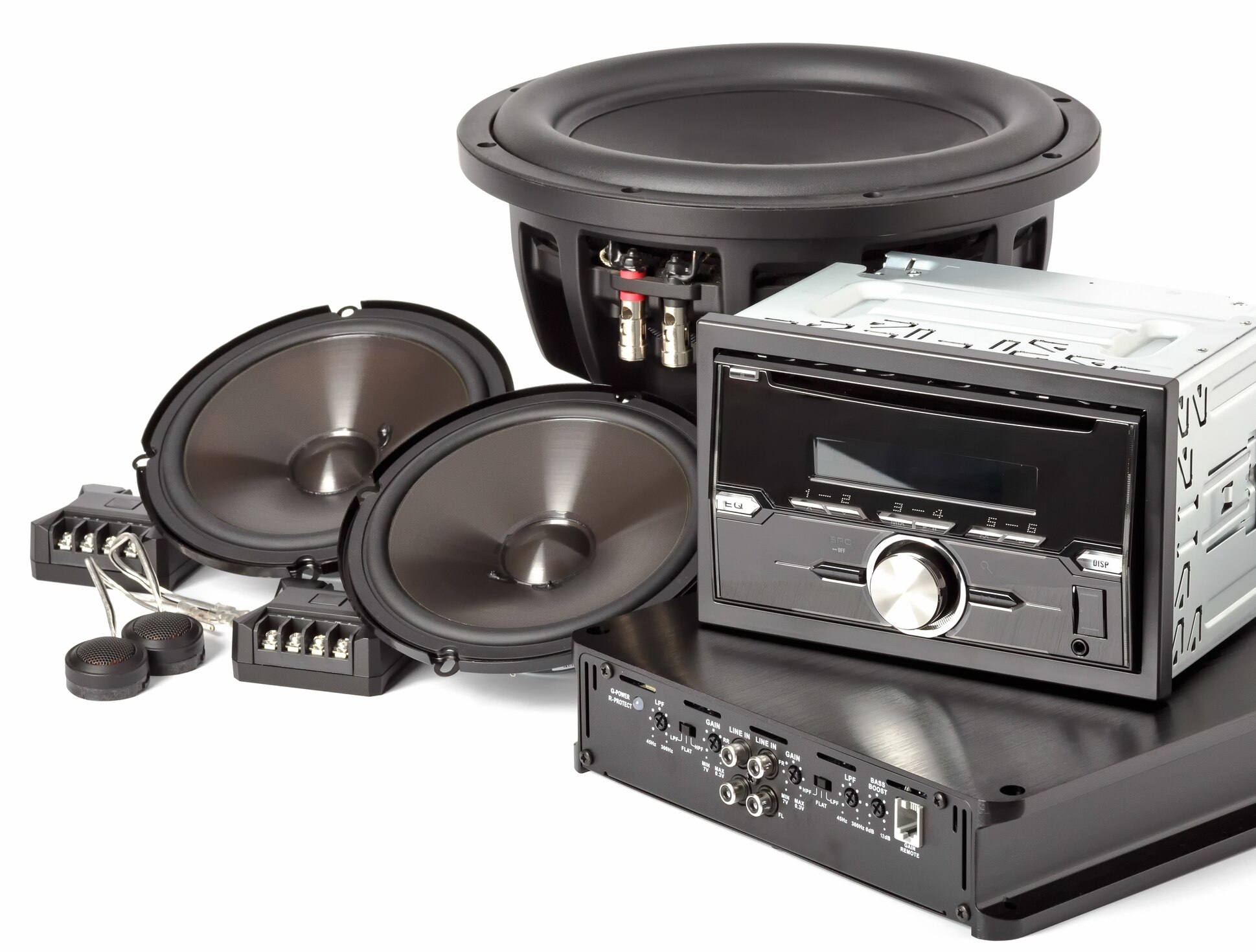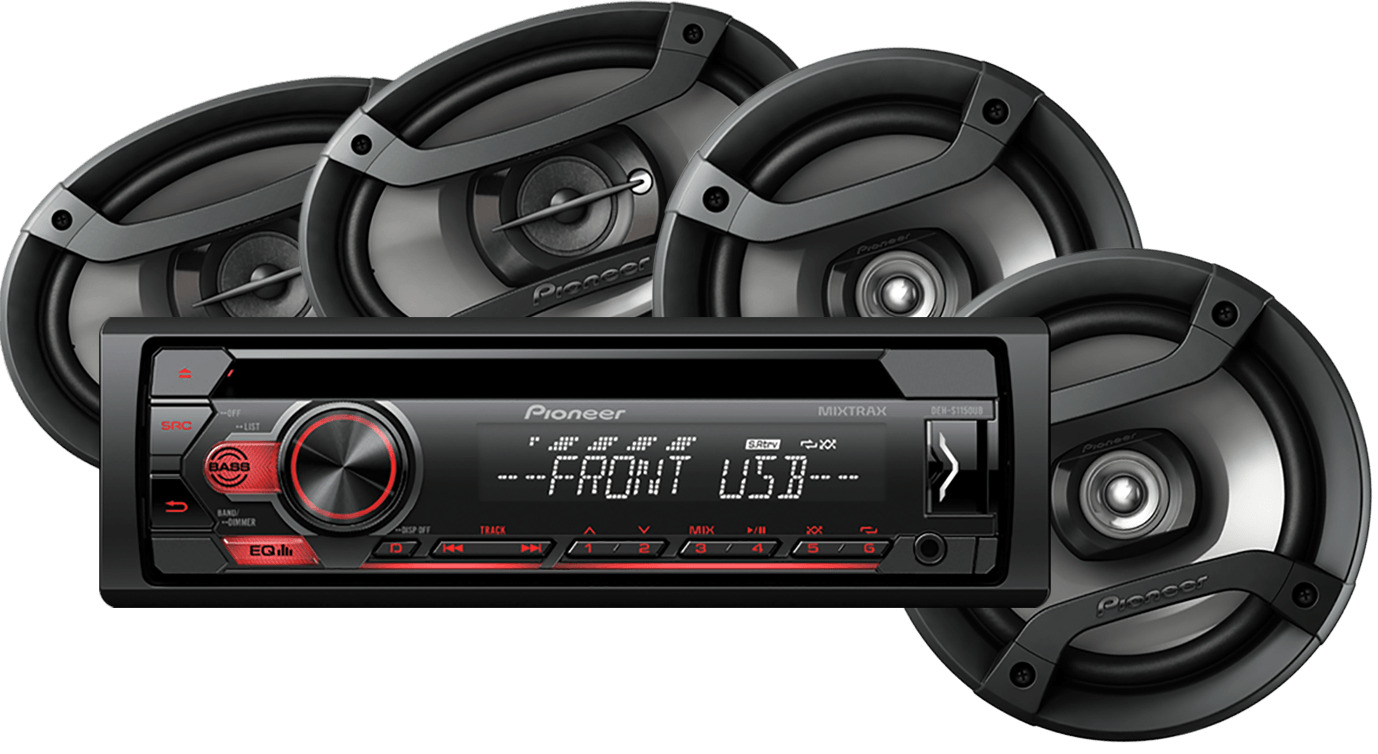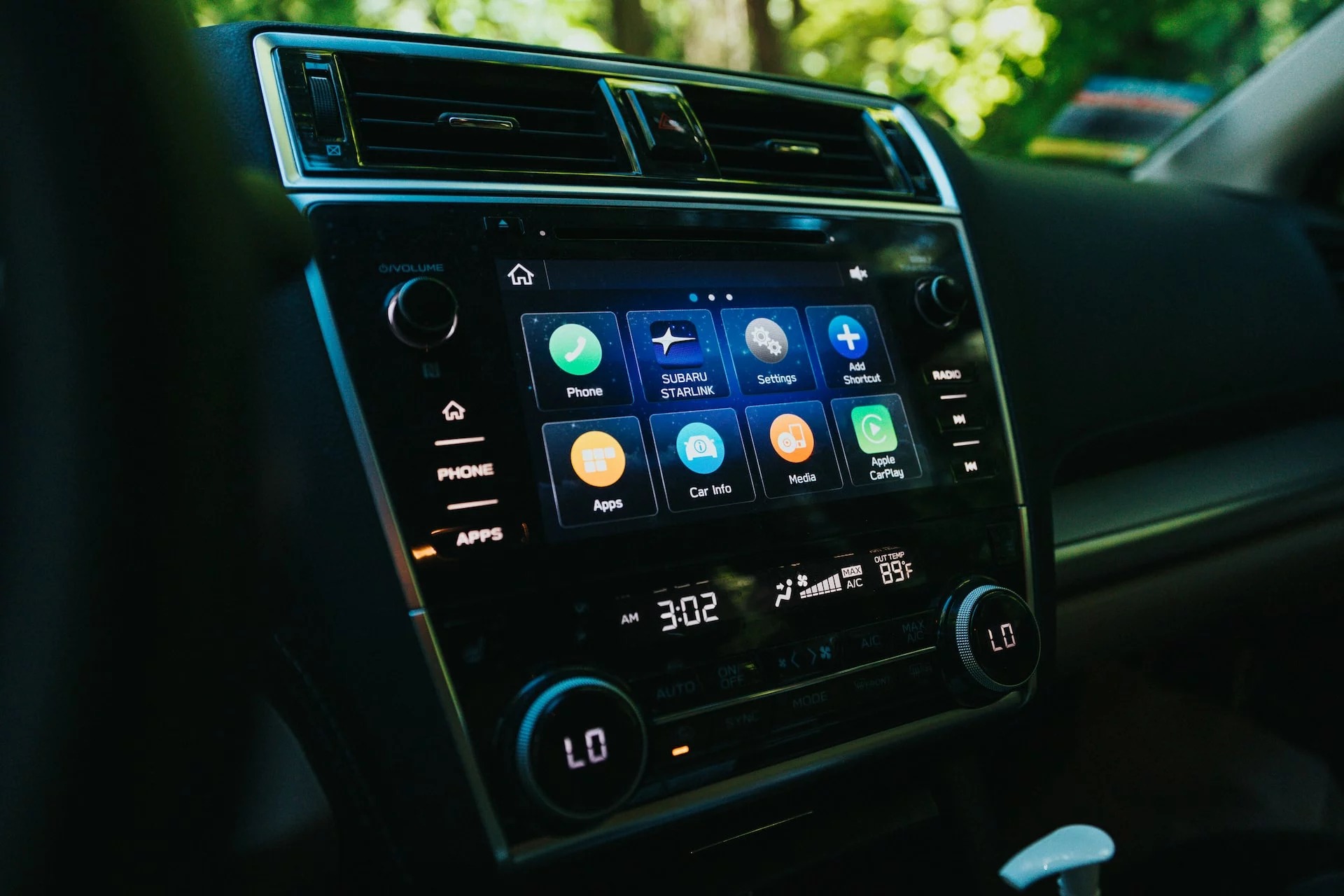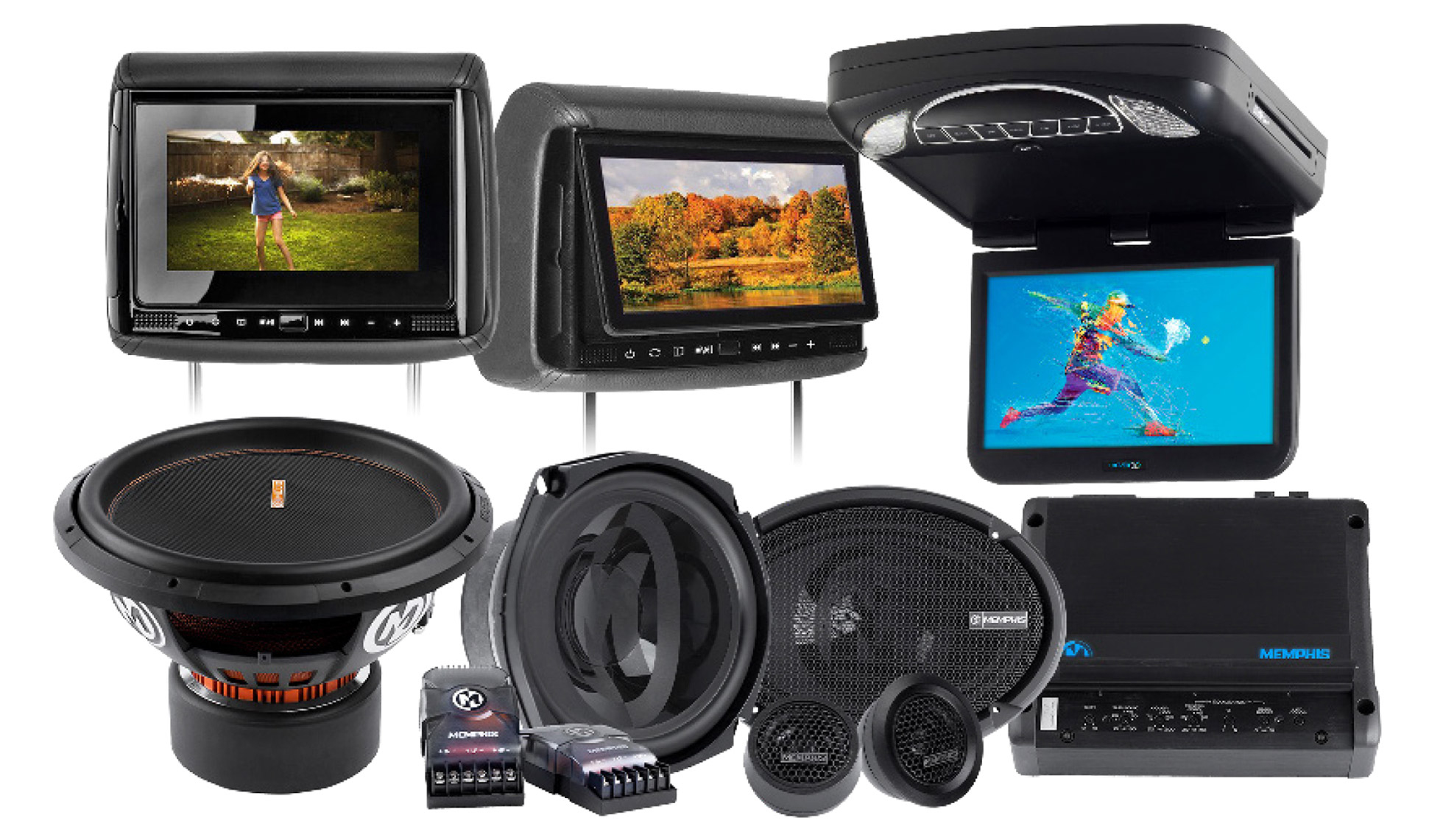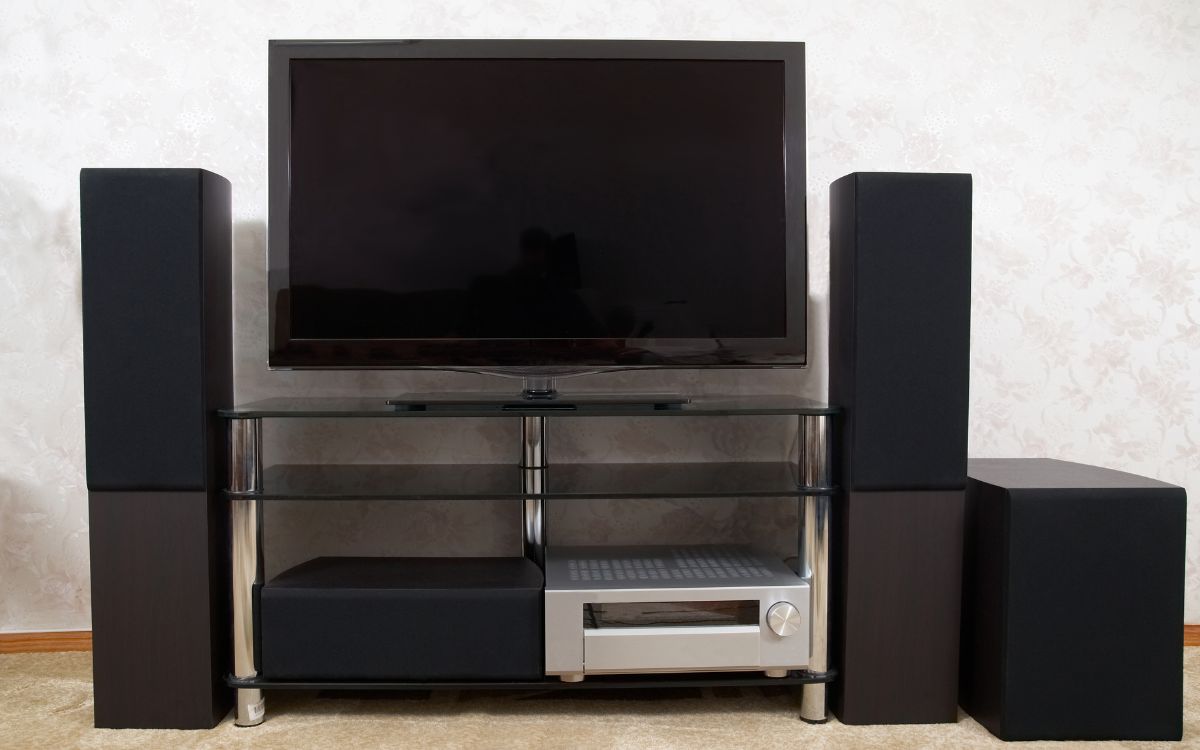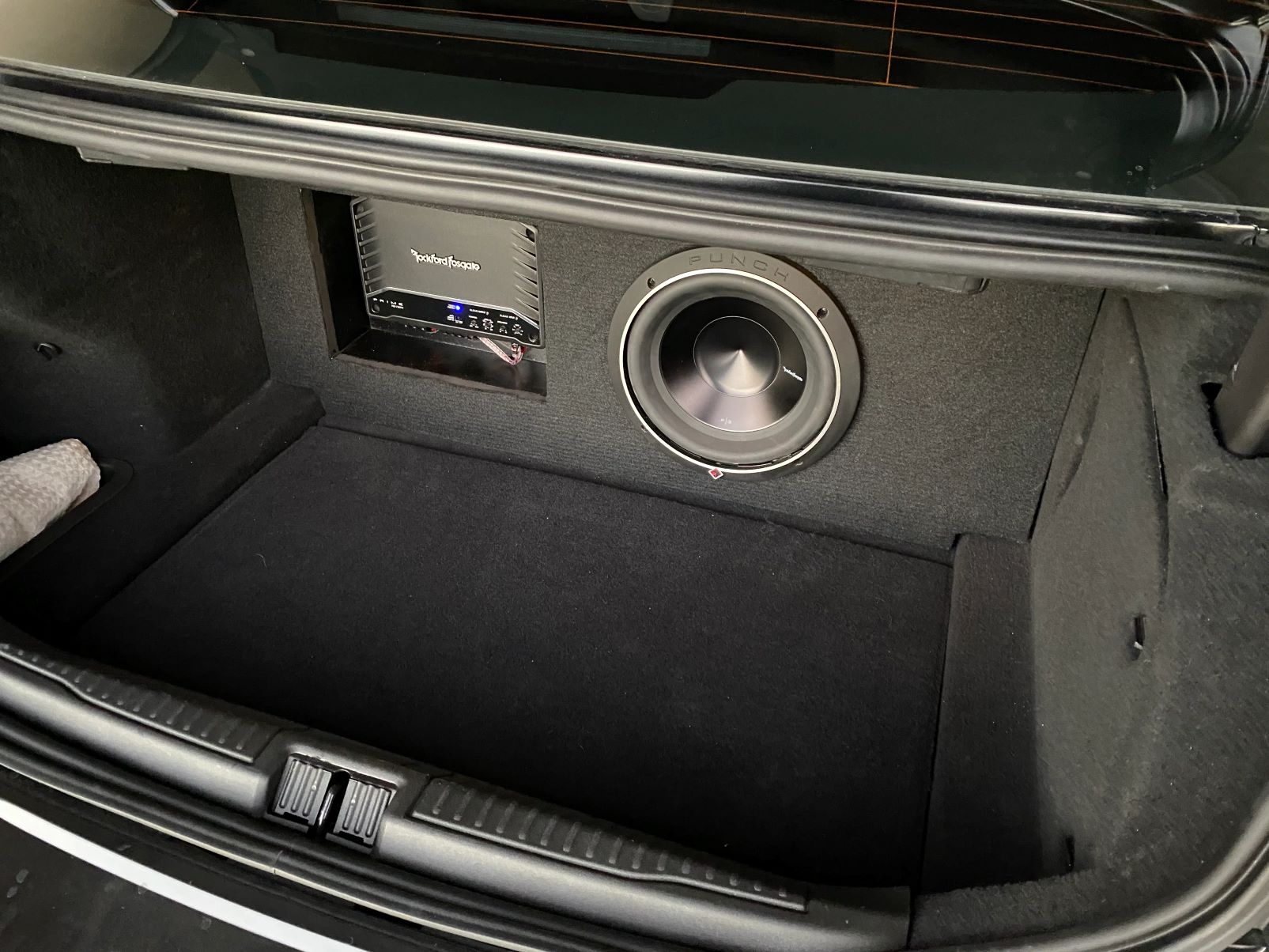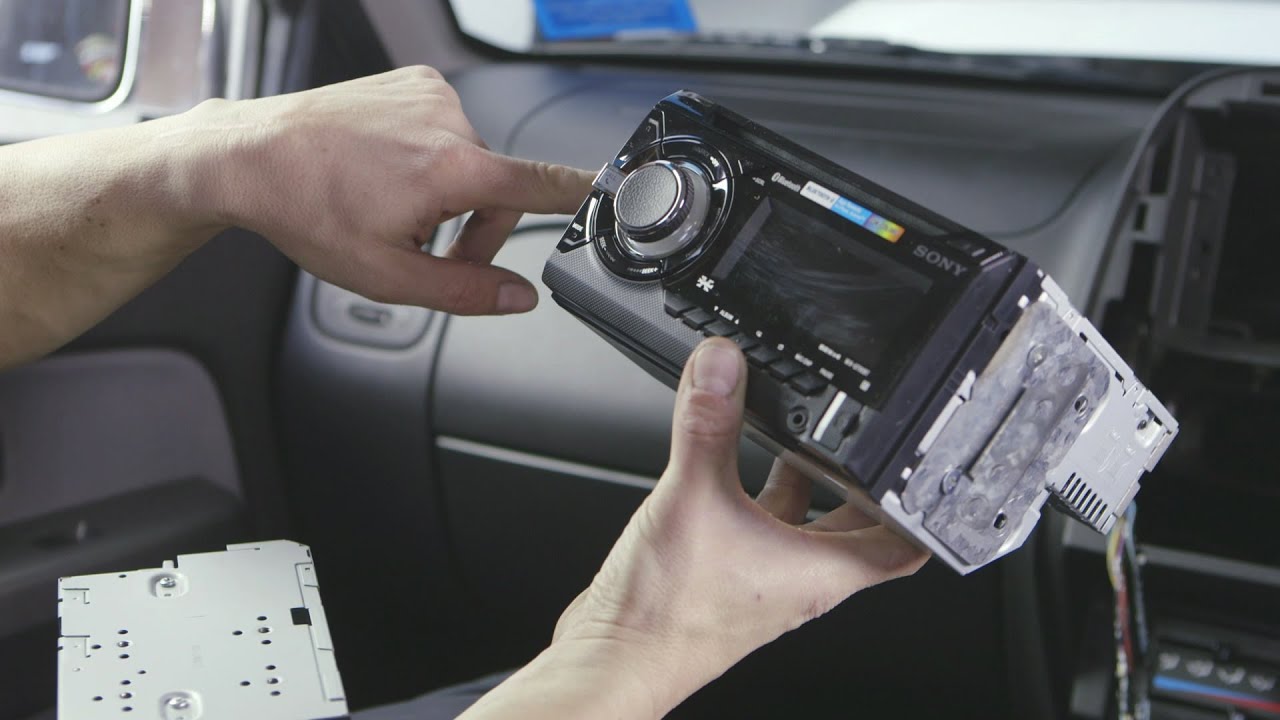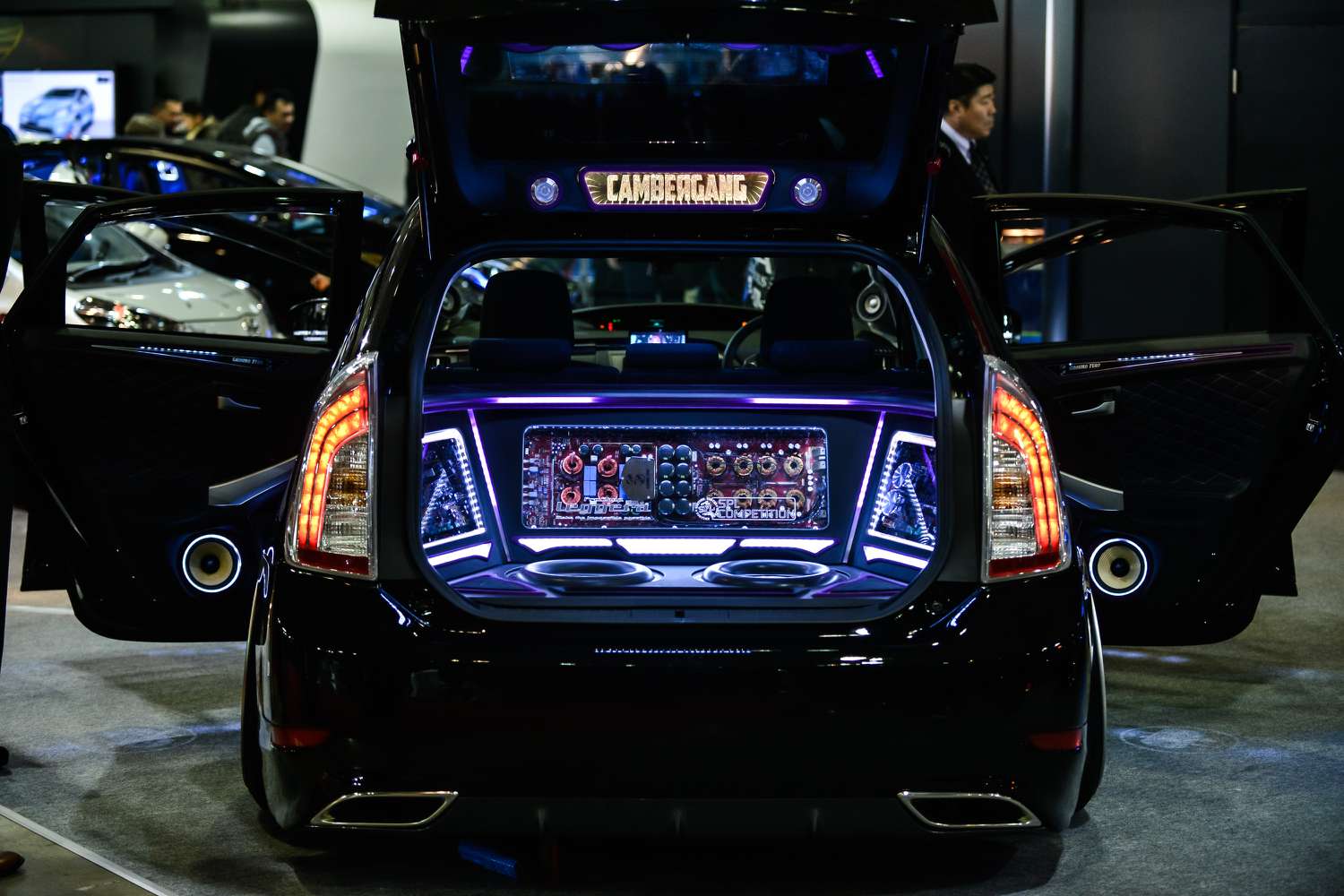Home>Devices & Equipment>Car Audio>How Much To Install Car Audio System
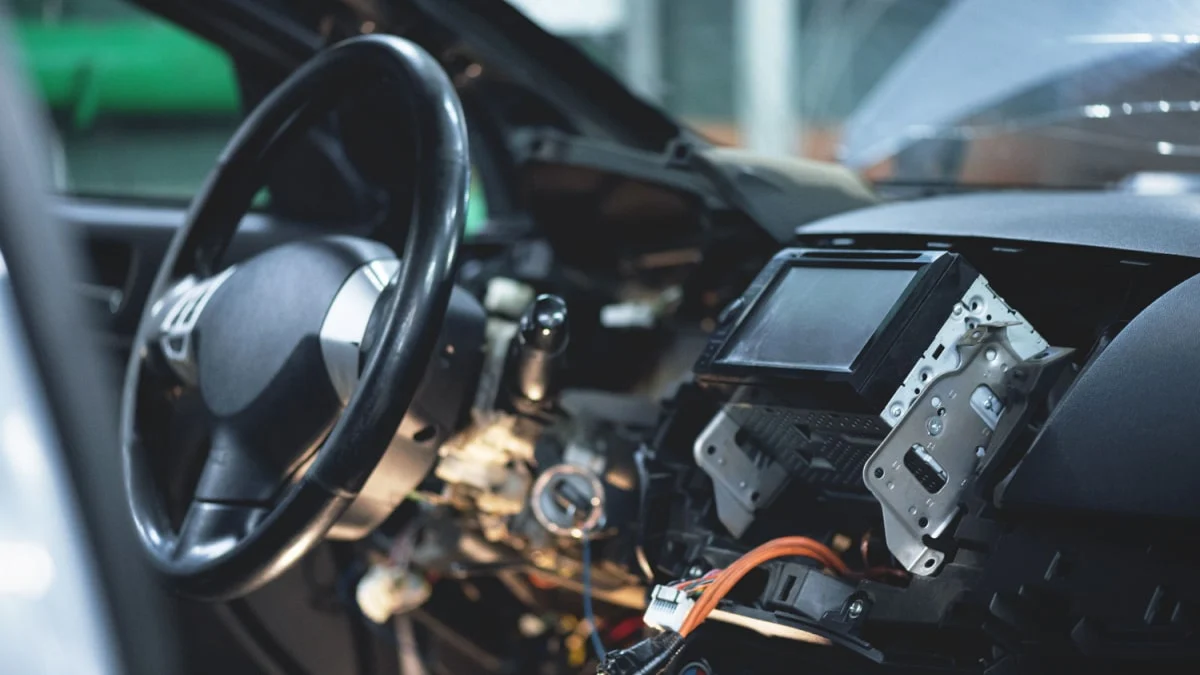

Car Audio
How Much To Install Car Audio System
Modified: January 22, 2024
Looking to install a car audio system? Find out how much it will cost and get expert advice on choosing the best car audio options.
(Many of the links in this article redirect to a specific reviewed product. Your purchase of these products through affiliate links helps to generate commission for AudioLover.com, at no extra cost. Learn more)
Table of Contents
- Introduction
- Factors that Affect the Cost of Installing a Car Audio System
- Cost Breakdown of Car Audio System Installation
- DIY vs Professional Installation: Which is More Cost-Effective?
- How to Choose the Right Car Audio System for Your Budget
- Tips to Save Money on Car Audio System Installation
- Conclusion
Introduction
Welcome to the world of car audio systems, where music comes alive with crystal-clear sound and exhilarating bass. Whether you’re a music aficionado or simply enjoy a great driving experience, upgrading your car’s audio system is a fantastic investment. However, before diving into the exciting world of car audio, it’s important to understand the cost and factors involved in installing a top-notch system.
Installing a car audio system involves more than just picking out fancy speakers and a flashy head unit. It requires careful planning, knowledge of car interiors, understanding of the electrical system, and expertise in audio integration. The cost can vary depending on various factors, including the components you choose, the complexity of the installation, and whether you opt for professional installation or go the DIY route.
In this article, we will explore the various factors that affect the cost of installing a car audio system, provide a breakdown of the costs involved, discuss the pros and cons of DIY versus professional installation, offer tips to save money, and guide you on choosing the right car audio system for your budget.
So, buckle up and get ready to dive into the world of car audio as we unravel the mysteries of car audio system installation costs.
Factors that Affect the Cost of Installing a Car Audio System
Several factors come into play when determining the cost of installing a car audio system. Understanding these factors will help you make informed decisions and budget accordingly. Here are the key factors to consider:
1. Quality of Components: The quality of the audio components you choose will greatly impact the cost. From speakers and amplifiers to subwoofers and head units, you can find a wide range of options in terms of price and quality. High-end, premium brands will naturally cost more than budget-friendly options, but they often deliver superior sound quality and durability.
2. Complexity of Installation: The complexity of the installation process can vary depending on your vehicle’s make and model. Factors such as the accessibility of wiring, the need for custom mounting brackets, or the integration of advanced features like Bluetooth or navigation systems can add to the installation time and cost. Older vehicles may require additional modifications to accommodate modern audio systems.
3. Labor Charges: If you opt for professional installation, the cost will include labor charges. The expertise and experience of the audio installer will influence the rates. Complex installations, such as custom fabrication work or integrating audio systems into luxury vehicles with intricate interiors, may come with higher labor costs.
4. Audio System Customization: If you desire a customized audio system with unique features and specialized components, expect to pay more. Customization may involve modifications to the interior, speaker placements, or the installation of additional accessories like sound processors or equalizers. These personalized touches can greatly enhance your audio experience but may also increase the overall cost.
5. Wiring and Accessories: The cost of wiring and accessories such as wiring harnesses, connectors, fuse blocks, and power cables should be factored into your budget. Depending on the complexity of your system and the need for additional wiring, these costs can vary.
6. Professional Tune-Up: After the installation, it’s important to have the system professionally tuned for optimal sound quality. This includes adjusting the equalization, crossover settings, and time alignment. While some installers may include this service in their overall fee, others may charge an additional cost. A professional tune-up ensures that your audio system performs at its best.
By considering these factors, you’ll have a better understanding of the costs involved in installing a car audio system. Next, let’s break down the expenses, so you know what to expect in terms of pricing.
Cost Breakdown of Car Audio System Installation
When it comes to installing a car audio system, the costs can vary depending on your specific requirements and preferences. Here’s a breakdown of the different components and their approximate costs:
1. Head Unit
The head unit is the central control system of your car audio system. Prices can range from around $50 to $500, depending on the brand, features, and audio quality. Advanced features like touchscreen displays, Apple CarPlay or Android Auto compatibility, and built-in navigation can significantly increase the price.
2. Speakers
The cost of speakers depends on the brand, size, and audio quality. Entry-level speakers can start at around $50 for a pair, while premium speakers can cost several hundred dollars. To achieve a balanced sound, you may need to invest in component speakers, which consist of separate tweeters and woofers.
3. Amplifiers
Amplifiers are essential for powering your car audio system and improving overall sound quality. Prices vary depending on the power output and brand, ranging from $100 to $500 or more for high-end options.
4. Subwoofers
If you want deep and powerful bass, you’ll need a subwoofer. Prices for subwoofers range from $50 to $500, depending on the size, power handling, and brand. Additionally, you’ll need to budget for a subwoofer enclosure or box, which can cost around $50 to $200.
5. Wiring and Accessories
Wiring and accessories include items like wiring harnesses, connectors, fuse blocks, power cables, and speaker wire. These costs can add up, with prices typically ranging from $50 to $200 or more, depending on the complexity of your installation.
6. Labor Charges
If you choose to have your car audio system professionally installed, labor charges will be added to the overall cost. Labor rates can vary based on the complexity of the installation, ranging from $100 to $500 or more.
It’s important to note that these are rough estimates, and actual costs may vary depending on your location and the brand you choose. Additionally, if you opt for customization or additional features, such as sound processors or equalizers, the cost will increase accordingly.
Keep in mind that while it’s tempting to choose the cheapest options for each component, investing in higher-quality audio equipment can result in better performance and longevity. Take your time to research and compare prices, read reviews, and consult with an experienced car audio professional to find the best balance between cost and quality.
DIY vs Professional Installation: Which is More Cost-Effective?
When it comes to installing a car audio system, you have the option to do it yourself (DIY) or hire a professional installer. Both approaches have their advantages and considerations, including the cost factor. Let’s explore the cost-effectiveness of each option:
DIY Installation
DIY installation can be an attractive option for those who are knowledgeable about car electronics and have experience working with wiring and audio systems. The primary advantage of a DIY installation is the potential cost savings. By eliminating labor charges, you can allocate your budget towards higher-quality components.
However, it’s important to consider the challenges and risks associated with DIY installations. Installing a car audio system involves complex wiring, proper integration, and precise tuning. If you’re not experienced, you may encounter difficulties and make mistakes that could lead to poor audio quality or even damage to your vehicle’s electrical system. This could ultimately result in extra costs to fix any issues.
Professional Installation
While professional installation comes with additional costs, it provides several advantages that make it a worthwhile investment. Professional installers have the knowledge, experience, and expertise to ensure a seamless and high-quality installation. They understand the intricacies of different vehicle models, use proper tools and techniques, and can troubleshoot any potential issues that may arise.
Additionally, professional installation often comes with warranties and guarantees. If any problems occur after the installation, the installer can diagnose and resolve them without additional costs. This peace of mind and the assurance of a job well done can outweigh the initial expense.
It’s worth noting that professional installers have access to industry resources and may be able to source components at better prices than consumers. They may also have discounts or special promotions, which can offset some of the labor costs.
Choosing the Right Option
The decision between DIY and professional installation ultimately depends on your comfort level, experience, and budget. If you have the necessary skills and experience, along with a desire to learn and tackle the installation process, DIY can be a cost-effective choice. However, if you want a hassle-free experience, optimal sound quality, and the peace of mind that comes with professional installation, it’s recommended to hire a qualified installer.
Remember to factor in the potential risks and costs associated with DIY installation, such as potential mistakes, warranty voids, and the time investment required to research and learn the installation process. Ultimately, it’s important to make an informed decision based on your own capabilities and preferences.
Whichever option you choose, prioritize safety, quality, and the satisfaction of enjoying a well-installed and exceptional car audio system.
How to Choose the Right Car Audio System for Your Budget
Choosing the right car audio system for your budget requires careful consideration of your audio preferences, desired features, and available funds. Here are some key steps to help you make an informed decision:
1. Set a Realistic Budget:
Before diving into the world of car audio, determine how much you’re willing to spend on the system. This will help you narrow down your options and focus on components that fit within your budget. Remember to allocate funds not only for the audio components but also for installation and any additional accessories or wiring required.
2. Research and Compare Brands:
Take the time to research and compare different brands, as they vary in terms of pricing, quality, and features. Read customer reviews, explore forums, and visit car audio specialty stores to gather insights into the performance and reliability of different brands.
3. Prioritize Essential Components:
Identify the essential components that you need within your budget. This typically includes a head unit, speakers, and amplifiers. Give priority to these components and allocate a larger portion of your budget towards them, as they have the most significant impact on sound quality.
4. Consider Future Upgrades:
Think about your future audio aspirations and consider investing in components that allow for future upgrades. For example, choosing a head unit with multiple preamp outputs will enable you to add more amplifiers or subwoofers in the future, without having to replace the head unit.
5. Seek Expert Advice:
Consult with knowledgeable car audio professionals who can provide guidance based on your budget and audio preferences. They can recommend suitable options within your price range and help you make an informed decision.
6. Audition the Sound Quality:
If possible, listen to different audio systems before making a purchase decision. Many specialty stores have demo units set up, allowing you to evaluate the sound quality firsthand. This will help you determine the right balance between price and audio performance.
7. Check for Warranty and After-Sales Support:
Ensure that the components you choose come with a warranty and reliable after-sales support. This will give you peace of mind and assistance in case of any issues that may arise after the purchase.
By following these steps, you can choose a car audio system that not only fits your budget but also meets your audio expectations. Remember, it’s essential to strike a balance between price and quality, and prioritize components that will provide the most significant improvement in your in-car audio experience.
Tips to Save Money on Car Audio System Installation
While installing a car audio system can be a significant investment, there are several ways to save money without compromising on quality. Consider these tips to make the most of your budget:
1. Do Your Research:
Take the time to research and compare prices from different retailers or online stores. Look for discounts, promotions, or bundle deals that may offer cost savings on audio components. Saving even a small percentage on each component can add up to significant savings overall.
2. Consider Pre-Owned Components:
If your budget is limited, consider purchasing pre-owned or refurbished audio components. Many car enthusiasts frequently upgrade their systems, offering quality used equipment at a more affordable price. Just make sure to buy from reputable sellers and thoroughly test the components before purchasing.
3. DIY Installation (If you have the skills):
If you have the necessary technical skills and knowledge, consider tackling the installation yourself. By eliminating labor costs, you can allocate more of your budget towards higher-quality components. However, ensure that you have the expertise to handle the wiring and integration correctly to avoid any potential issues.
4. Install Components Gradually:
If your budget doesn’t allow for a complete audio system upgrade all at once, consider installing components gradually. Start with essential components, such as a new head unit or speakers, and add more components over time as your budget allows. This approach allows you to spread out the expenses and still enjoy an improved audio experience.
5. Compare Installation Quotes:
If you choose professional installation, obtain quotes from multiple installers. Compare the prices and services offered to ensure you’re getting the best value for your money. Additionally, consider seeking recommendations or reading reviews to ensure that the installer is reputable and delivers quality work.
6. Choose Versatile Components:
Opt for audio components that offer versatility and future upgrade options. Choosing a head unit with multiple preamp outputs, for example, allows you to add amplifiers or subwoofers in the future without having to replace the head unit, saving you money in the long run.
7. Keep an Eye Out for Sales and Clearance:
Subscribe to newsletters from car audio retailers or follow them on social media to stay updated about sales, clearance events, or special promotions. These events can offer substantial discounts on high-quality audio components.
By implementing these money-saving tips, you can make the most of your budget while still enjoying a high-quality car audio system. Remember to prioritize sound quality and reliability over price alone to ensure a satisfying audio experience for years to come.
Conclusion
Upgrading your car audio system can transform your driving experience, immersing you in a world of high-quality sound and musical bliss. While the cost of installing a car audio system varies depending on several factors, by understanding these factors and following the tips mentioned in this article, you can make informed decisions and optimize your budget.
Factors such as the quality of components, complexity of installation, labor charges, and customization options all play a role in determining the cost of installation. By carefully considering these factors, you can prioritize the components that matter most to you and allocate your budget accordingly.
When it comes to installation, you have a choice between DIY and professional installation. While DIY can be cost-effective, it requires technical skills and knowledge to ensure a successful and safe installation. Professional installation, on the other hand, offers expertise and peace of mind, but comes with additional cost.
Choosing the right car audio system for your budget involves thorough research, comparison of brands, prioritizing essential components, seeking expert advice, and auditions for sound quality. By following these steps, you can find a system that meets your audio preferences and fits within your budget.
Additionally, there are tips to save money on car audio system installation, such as doing research, considering pre-owned components, DIY installation (if you have the skills), installing components gradually, comparing installation quotes, choosing versatile components, and keeping an eye out for sales and clearance events.
In conclusion, with careful planning, budgeting, and consideration of your audio preferences, you can achieve a remarkable car audio system without breaking the bank. Whether you opt for DIY installation or professional installation, prioritize quality, performance, and reliability. Enjoy the ride as you immerse yourself in the harmonious sounds of your favorite music.

